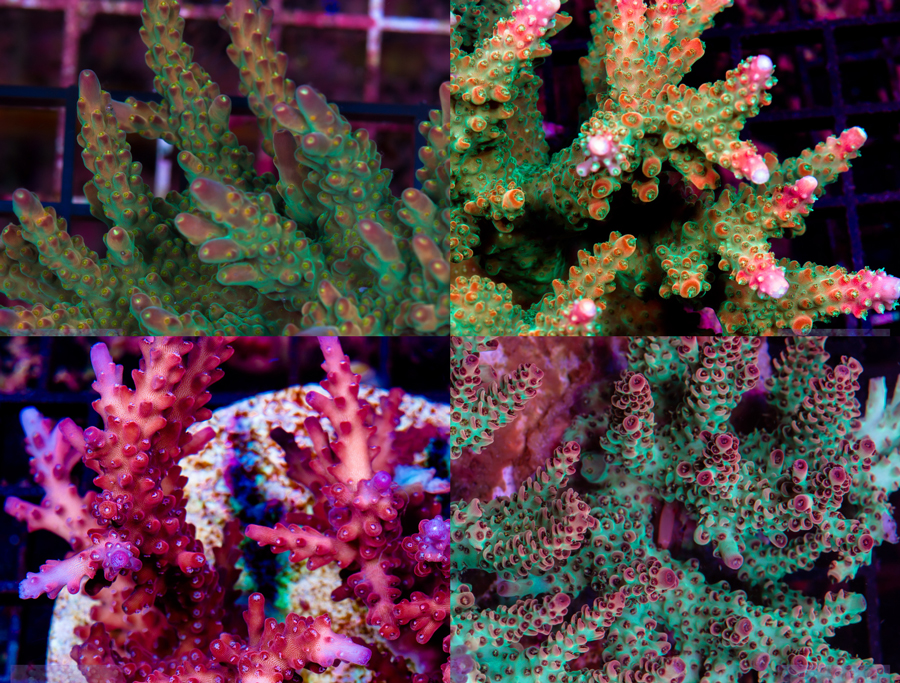Variety is the spice of life and that’s no different than in the reefing world where collectors are always seeking different acros that they don’t have, wether it be different in combination of colors, form, or even a specific color of polyps. While Jake and Nicole are busy reporting on location where many of our corals we keep originate, I will try to expose some of the corals that we are captive culturing here in the USA, more specifically here in Southern California.
Experienced acro keepers know that while corals may display a certain form and color in the wild, this quickly changes in our captive environments. That being said these corals shown here have been in captivity for several months and have settled into these colors under T5 lighting. Many equipment and chemistry variation can shift these characteristics. Nevertheless these indonesian corals do certainly satisfy our appetite for the time being and have a shot at carrying out legacy like many other corals we’ve come to love (Purple Monster, Oregon tort, Strawberry shortcake, $500 Efflo, and various other rainbow corals.
The exact species of these acros are still a bit of mystery, but I will attempt to give some physical descriptions so those scientifically minded can take a stab at it.

Not since the classic Red Dragon have we truly fallen for a red coral. This one does it a little better. Imported dark brown, it has responded really well with dominant pigments of red with yellow and blue. Not sure what I love more, the blue tips or bright white polyps which stands out like star lights.
Do no mistaken this for a Carduus, Fenneri, or Walindii. It is not delicate and thin like the Red Dragon, it’s growth form is more of a staghorn, thicker and hardier. In this mass hobbyist landscape, we really don’t keep enough beautiful stag horn corals in my opinion.

The difference between shallow and deepwater acros start to blur when we see an acro like this. That’s because it’s neither thin nor thick and grows well under many different kinds lighting (T5’s, MH, or a combination of), but shows the most blend of colors under T5 lamps and really responds to a daily dose of UV. It is thick and tolerates low flow as well as high. Thick and tabling. Perhaps we can categorize it as a mid reef species.

This next coral can get passed on as a typical shallow reef species we’ve come to know and love in the Nasuta, Latistella & Microclados Acros, also known as varieties of Shortcakes. What makes this Indo variety beautiful is the blend of coralite that blends from the tip down. The beauty in this acro is in it’s subtleties. Unlike Aussie Shortcakes, which generally tend to be more yellow, this one shows off it’s pastel colors and contrasting long feeding polyps, which unfortunately I was not able to capture as it was disturbed while taking the photo.

This next one will more or less speak for itself. Often we see beautiful frags corals on the market but not able to really imagine what it looks like all grown up. I hope this gives some sense. Its not a stag but it does grow thick and bushy. Hardy and takes strong water flow to satisfy it’s needs. The orange highlights are really stunning!

I will leave you with this last one. Which to me, really makes a distinct statement about Indonesian Acros. Thin branched, perhaps mid to lower reef species. I’m certain we would not see these coralite structures if it had been living in strong water currents. Gosh, an mother nature create a anything more astonishing?



